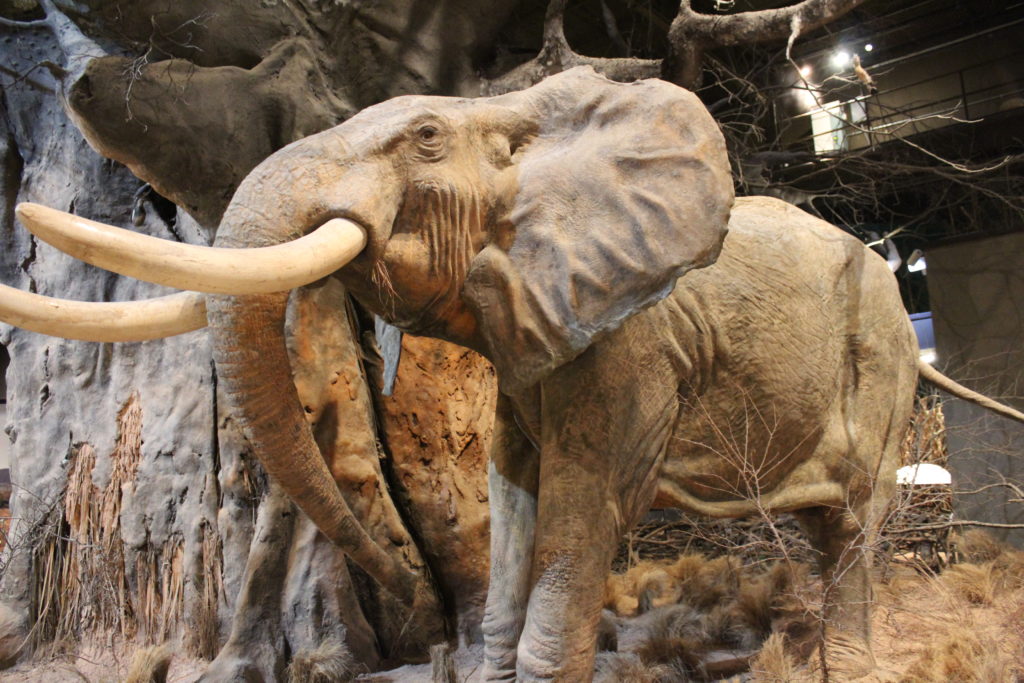Author: Maryellyn Hawbaker, Educational Interpreter
The largest member of our collection is the African Elephant, which is located in our Environments of Africa exhibit hall. This mammoth of the African savanna also has a smaller relative, the African Forest Elephant! These rainforest dwelling elephants of west and central Africa are more shy and elusive than their savanna counterparts, and their numbers are typically approximated by “dung counts”: an analysis of the density and distribution of their droppings. Forest elephants have a number of physical aspects that differentiate them from the savanna elephants; their ears are more oval shaped, and their tusks are straighter and point downward, where the savanna elephants’ tusks curve outwards. One of the other main differences in these species of elephants is that the forest elephants reproduce much more slowly than the savanna elephants, causing them to have a harder time coping with population decline. However, there are several areas especially in Gabon and the Republic of Congo where they are protected and thrive.
Last month there was an initiative started by KAZA (the Kavango Zambezi Transfrontier Conservation Area) to provide the first ever synchronized and coordinated aerial survey of Africa’s largest savanna elephant populations. The survey will cover more than 128 million acres of land across five countries: Angola, Botswana, Namibia, Zambia, and Zimbabwe will work together to create the most comprehensive compilation of data about the numbers, habitats, and distribution of African savanna elephants in these areas. This coordination of the five countries of KAZA in elephant management will hopefully usher in a new era of protection and conservation for this majestic endangered species.

